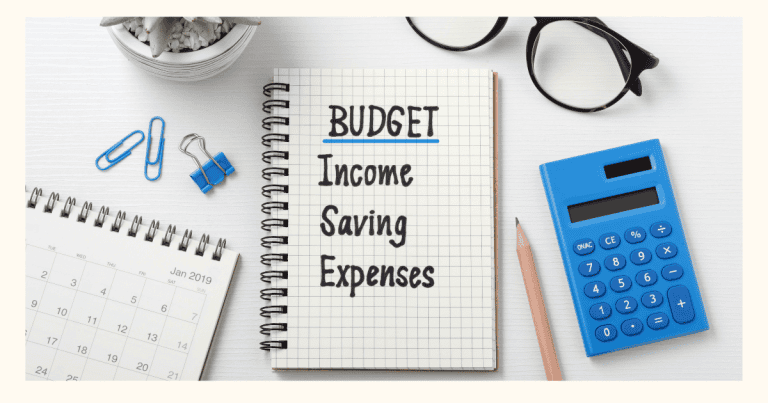16 Essential Sinking Funds to Help You Avoid Debt and Stress

Imagine a surprise car repair, a wedding invite, or a yearly insurance bill popping up. Instead of pulling out your credit card or draining your emergency fund, you calmly withdraw the exact amount from an account you’ve been building for months. That’s the magic of sinking funds.
If the term sounds unfamiliar, don’t worry, I’ll explain. Sinking funds are basically specific savings buckets for expenses you know might happen. Let’s dive into sixteen essential sinking funds you need to create today to avoid debt and stress.
1. Car Maintenance Fund
Your car keeps your life running smoothly.. until it doesn’t. Repairs, oil changes, new tires, and even registration fees can pop up out of nowhere. A car maintenance sinking fund means you’re prepared for these costs instead of scrambling to cover them.
Start by estimating your annual car-related expenses. If maintenance and registration usually cost $1,200, set aside $100 a month. That way, when your mechanic drops a $600 repair bill on you, you’re ready.
2. Holiday and Gift Fund
Holidays and celebrations are joyful, but the costs can add up fast. Between Christmas gifts, birthday presents, and other special occasions, it’s easy to blow your budget without even realizing it. A holiday and gift sinking fund spreads the expense throughout the year, so you’re not left looking for ways to get money asap.
Figure out your yearly gift budget. Let’s say you spend $500 on holiday gifts and $300 on birthdays. Save $67 a month, and you’ll be covered when it’s time to shop.
3. Vacation Fund
If you’re like me and love sipping margaritas on a sunny beach or hiking your favorite national park, you need to set this fund in place. A vacation sinking fund helps you plan your dream getaway without returning home to a massive pile of debt.
Let’s say you’re looking to go on a $2,400 trip next summer. By saving $200 a month, you’ll have everything, from flights to margaritas, paid for before you even pack your bags. Include extras like eating out and souvenirs in your budget to avoid surprise expenses.
I’ve found that using a dedicated savings account for vacation funds makes planning more exciting too. Watching the balance grow feels like counting down the days to paradise!
4. Home Maintenance Fund
Owning a home is rewarding, but it’s also a responsibility. Repairs like leaky faucets, a broken water heater, or peeling paint are bound to happen. Setting up a home maintenance sinking fund ensures you’re prepared for the inevitable.
Experts suggest saving 1-3% of your home’s value annually for maintenance. For a $250,000 home, that’s $2,500 to $7,500 per year. Start with what feels manageable, even $100 a month will add up over time.
You can also break this fund into smaller categories, like “Appliances,” “Roof Repairs,” and “Yard Work.”
5. Medical Expenses Fund
Healthcare costs can hit hard, even with insurance. From co-pays to prescriptions to deductibles, a medical sinking fund keeps you ready for anything.
Estimate your yearly out-of-pocket medical costs. If your deductible is $1,000 and you typically spend $200 on prescriptions, aim to save around $100 monthly. You’ll be just fine when an unexpected bill comes up.
You should roll over any unused funds year-to-year. If you’re lucky enough to avoid big expenses one year, you’ll be even more prepared the next.
6. Annual Subscriptions or Memberships Fund
Services like Netflix, Amazon Prime, gym memberships, and even professional subscriptions can sneak up on you when renewal season hits. A sinking fund for subscriptions ensures you’re not blindsided by these recurring costs.
Add up your yearly subscriptions and memberships. If they total $360, saving $30 a month means you’ll always be ready to renew.
7. Special Events Fund
From weddings and graduations to anniversaries and baby showers, your life’s big moments deserve celebration, but they can also be expensive. A special events sinking fund ensures you can fully enjoy these occasions without stressing over the cost.
Start saving as soon as you’re aware of an event. For example, if you’re part of a wedding party and expect to spend $1,200, saving $100 a month makes it possible.
8. Pet Care Fund
Pets bring joy to our lives, but they also come with regular costs. From routine vet visits to grooming appointments and even unexpected medical emergencies, having a pet care sinking fund ensures your furry friend is well taken care of.
Estimate your pet-related expenses. For example, if annual vet visits and supplies cost $600, save $50 a month. If an emergency comes up, you’ll have peace of mind knowing your fund is ready.
This fund can also cover routine needs like food or vaccinations. Budgeting for these items ahead of time prevents you from struggling when you run low.
9. Education Fund
Whether it’s for your kids or yourself, education expenses can add up quickly. Having a sinking fund for education helps cover costs like school supplies, tuition, or online courses without a strain on your finances.
Plan based on expected costs. If your child’s extracurricular activities total $1,200 a year, save $100 a month to stay ahead.
You can also use this fund for things like field trips, or even new textbooks. Breaking these costs into small contributions ensures nothing gets left behind.
10. Clothing Fund
Clothing may not seem like a big expense until you’re replacing your summer outfits with new clothes for the winter. A clothing sinking fund ensures you’re prepared for seasonal needs or whenever you feel like you need to change your style.
Save based on your typical spending. If you spend $600 a year on clothing, set aside $50 a month so you’re ready for sales and clothes you want to replace. This fund can also be useful for special occasions like weddings or interviews when you want to look your best.
11. Phone or Laptop Upgrade Fund
From replacing an old laptop to upgrading your phone, tech expenses can hit hard. A sinking fund ensures you can afford the latest gadgets when the time comes.
Set a goal based on the device you’re saving for. If a new phone costs $1,200, saving $100 a month ensures you’re ready to upgrade in a year. Use this fund for smaller purchases like headphones or smart home devices too.
12. Emergency Travel Fund
Sometimes, life requires last-minute travel, like a family emergency or a job opportunity. An emergency travel sinking fund helps you book flights or accommodations without breaking the bank. Try to save $50-$100 a month to build up a fund that’s ready when you need it.
13. Kids’ Activities Fund
Kids’ extracurricular activities are not just enriching but essential for their development. Whether it’s soccer practice, dance recitals, or summer camp, these activities can bring unexpected costs. Instead of cutting corners or saying no, a dedicated fund can help you support their interests.
Start by making a list of regular expenses, including registration fees, uniforms, equipment, and travel costs. Estimate a total for the year, say $1,500, and divide it by 12. Contributing $125 a month ensures you’re always prepared for sign-up deadlines or last-minute purchases.
Beyond sports and hobbies, this fund can also cover academic extras, like science fair projects. With this fund in place, you’ll never have to worry about your child missing out.
14. Business Expenses Fund
If you own a business or operate a side hustle, expenses like marketing, software, and all that professional stuff are things you can’t avoid. A business sinking fund helps you stay ahead of costs, so you’re not caught off guard when new opportunities arise.
Consider all your potential needs, such as website hosting, office supplies, or attending meetings. Let’s say these total $2,400 annually. By setting aside $200 a month, you’ll always be ready to invest in growth without dipping into personal funds.
This can also provide a small net for unexpected setbacks, like repairing equipment or hiring short-term help. Having a business expenses fund not only ensures smooth operations but also helps you seize opportunities as they come.
15. Entertainment Fund
Life isn’t all about work and bills, having fun is an important part of staying functional and happy. If you enjoy going to concerts, movie nights, or weekend getaways, an entertainment sinking fund allows you to indulge without feeling guilty.
Think about what entertainment looks like for you and your family. Maybe you love trying new restaurants or visiting amusement parks. Budget for these experiences by estimating your annual expenses and breaking them down monthly.
Having a dedicated fund also encourages you to prioritize experiences that matter most. Instead of feeling torn between saving and splurging, you can enjoy a guilt-free night out or even splurge on front-row tickets, if you get the chance.
16. Hobby Fund
Whether you’re a photographer or an avid gardener, hobbies are a wonderful way to express yourself and unwind. A hobby sinking fund ensures you can pursue your passions without financial guilt.
This not only supports your interests but also leaves room to explore new ones. Want to try pottery or painting? With a hobby fund, you’re free to experiment without hesitation or guilt.
Conclusion
Sinking funds are a simple way to take charge of your finances. From car repairs to vacations to life’s special moments, these funds help you save intentionally and spend confidently. Start small, stay consistent, and watch your savings grow.






